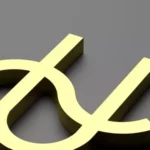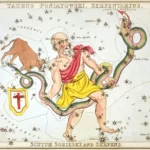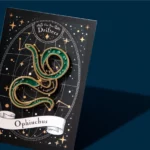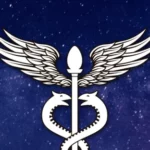Throughout history, symbols have played a significant role in conveying deeper meanings and messages. One such symbol that has intrigued and captivated people for centuries is the Caduceus. Often associated with healing, medicine, and astrology, the Caduceus holds hidden symbolism that extends beyond its surface appearance. This article delves into the enigmatic world of the Caduceus, exploring its origin, astrological significance, and connections to Greek mythology. By unraveling the layers of symbolism within this ancient emblem, we can gain a deeper understanding of its wisdom and relevance in both the past and present. Join us on this intriguing journey as we unlock the secrets of the Caduceus in Ophiuchus astrology.
Contents
- The Caduceus Symbol
- Caduceus in Ophiuchus Astrology
- Unveiling the Hidden Symbolism
- Connections to Greek Mythology
- The Caduceus in Modern Medicine
- Unlocking the Wisdom
- Conclusion
-
Frequently Asked Questions
- What is the significance of the Caduceus symbol?
- What is the origin of the Caduceus symbol?
- How does the Caduceus relate to astrology?
- What do the serpents in the Caduceus symbol represent?
- What is the meaning behind the wings in the Caduceus symbol?
- What role does the Caduceus play in Greek mythology?
- How is the Caduceus symbol connected to healing?
- What is the difference between the Caduceus symbol and the medical symbol?
- What is the controversy surrounding the use of the Caduceus in modern medicine?
- How can astrology enthusiasts apply the wisdom of the Caduceus symbol?
- References
- Frequently Asked Questions
-
Frequently Asked Questions
- What is the significance of the Caduceus symbol?
- What is the origin and history of the Caduceus symbol?
- What does the Caduceus symbol represent in Ophiuchus astrology?
- How does the Caduceus symbol relate to astrology?
- What is the Serpent symbol in relation to the Caduceus?
- What does the Winged Staff symbolize in the Caduceus?
- Who is the Messenger of the Gods in Greek mythology?
- What is the connection between the Caduceus and Asclepius?
- What is the Medical Caduceus?
- Why is there historical confusion and controversy surrounding the Caduceus symbol?
- References
- Read More
The Caduceus Symbol
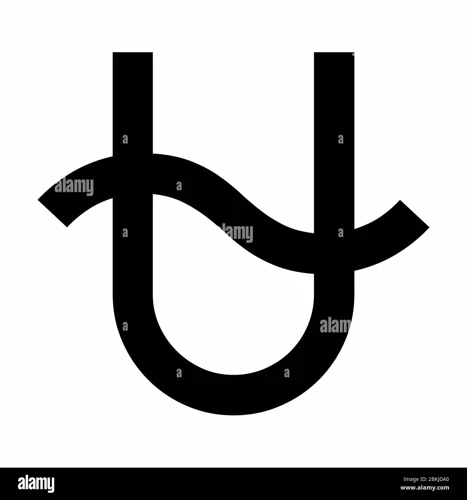
The Caduceus Symbol holds a rich history and profound meaning that has fascinated scholars and mystics for centuries. This ancient emblem features a central staff twined with two serpents and topped with wings. Originating in Greek mythology, the Caduceus is often associated with Hermes, the messenger of the gods. Its symbolic representation encompasses various elements, including duality, balance, healing, and spiritual transformation. In Ophiuchus astrology, the Caduceus gains additional significance as it aligns with the constellation of Ophiuchus, also known as the Serpent Bearer. The intertwined serpents are said to represent the two polarities of life, embodying both the physical and spiritual realms. The wings signify divine guidance and transcendence, suggesting a connection between earthly and celestial realms. Through exploring the hidden symbolism of the Caduceus, we can gain deeper insights into ourselves and the mysteries of the universe.
Origin and History
The origin and history of the Caduceus symbol can be traced back to ancient Greek mythology. This emblem is closely associated with the god Hermes, who was known as the messenger of the gods. According to the myth, Hermes came across two serpents locked in a fierce battle. In an attempt to stop the fight and restore balance, Hermes used his staff to separate the serpents. In gratitude, the serpents twined themselves around the staff, creating the iconic image of the Caduceus. This symbol served as a representation of peace, harmony, and divine intervention. Over time, the Caduceus gained prominence and became widely recognized as a symbol of Hermes and his role as a messenger. Its significance extended beyond communication, incorporating elements of healing, guidance, and protection. The Caduceus also found its way into other cultures and traditions, further evolving and adapting to different interpretations. Today, it remains a powerful symbol with a rich history that continues to intrigue and inspire. (Source: Understanding Work Preferences of Ophiuchus Air Signs)
Symbolic Representation
The Caduceus holds a symbolic representation that encompasses various elements, each contributing to its profound meaning. Let’s explore these symbolic aspects:
1. Staff: The central staff of the Caduceus symbolizes authority and power. It represents the balance between opposites, such as light and darkness, masculine and feminine energies. The staff can also symbolize the spine, which signifies the connection between the physical and spiritual realms, aligning with the concept of Kundalini energy.
2. Serpents: The intertwined serpents on the Caduceus are widely associated with healing and transformation. In ancient civilizations, serpents were seen as symbols of wisdom, rebirth, and regeneration. The duality of the serpents represents the integration of opposing forces, such as life and death, creation and destruction. Additionally, the serpents can be interpreted as a representation of the dualistic nature of human existence, reminding us of the constant interplay between our primal instincts and higher consciousness.
3. Wings: The wings atop the Caduceus symbolize transcendence, freedom, and divine guidance. They represent the ability to rise above earthly limitations and connect with higher realms of knowledge and spirituality. The wings remind us of our potential for growth, elevation, and the pursuit of wisdom.
4. Unity of Symbols: The integration of the staff, serpents, and wings in the Caduceus signifies the harmony and balance of opposing forces within ourselves and the universe. It represents the journey towards wholeness, where the union of seemingly contradictory elements leads to transformation, healing, and spiritual awakening.
As we delve into the hidden symbolism of the Caduceus, we gain a deeper appreciation for its intricate design and the profound insights it offers. It serves as a powerful reminder of the interconnectedness of all things and the potential for personal growth and transformation. Through embracing the symbolic representation of the Caduceus, we can tap into its wisdom and navigate our own journeys of self-discovery and enlightenment.
Caduceus in Ophiuchus Astrology

In Ophiuchus astrology, the Caduceus symbol takes on a unique and profound astrological significance. This zodiac sign, represented by the Serpent Bearer, embraces the energy of healing, transformation, and spiritual awakening. Those born under the Ophiuchus sign are believed to possess innate healing abilities and a deep understanding of the interconnectedness between the physical and spiritual realms. The Caduceus, with its intertwined serpents and winged staff, aligns perfectly with the symbolism of Ophiuchus. The serpents symbolize the dual nature of life, representing both the earthly and divine aspects of existence, while the wings symbolize transcendence and the ability to bridge the gap between the material and spiritual worlds. This powerful combination of symbolism in Ophiuchus astrology suggests that individuals born under this sign have a unique role to play in bringing healing and transformation to themselves and others. Explore more about Ophiuchus compatibility with other zodiac signs such as Aquarius here and discover the potential for harmonious connections and transformative partnerships.
Astrological Significance
The Caduceus holds profound astrological significance within the realm of Ophiuchus astrology. As an emblem associated with healing and transformation, it resonates deeply with the energy and characteristics of individuals born under the Ophiuchus zodiac sign. Ophiuchus is known as the Serpent Bearer, and those born under this sign are said to possess inherent healing abilities and a desire to seek truth and wisdom. The intertwining serpents of the Caduceus symbolize the dual qualities and forces within Ophiuchus individuals, representing their ability to navigate both the physical and spiritual realms. This symbol serves as a reminder of the power of transformation and growth that lies within each Ophiuchus individual. With their natural inclinations toward healing and their quest for knowledge, those born under the Ophiuchus sign can tap into the potent energy of the Caduceus, embracing their inherent gifts and manifesting positive change in their lives and the lives of others. Understanding the astrological significance of the Caduceus in Ophiuchus astrology allows individuals to connect with the deeper meanings and potentials of their astrological sign, unlocking a greater understanding of themselves and their unique path in life. Learn more about how Ophiuchus interacts with other zodiac signs in terms of compatibility by checking out our Ophiuchus compatibility guide.
Interpretation and Meaning
The interpretation and meaning of the Caduceus in Ophiuchus astrology delve into the realms of healing, transformation, and spiritual awakening. This symbol represents the unification of polarities and the balance between opposing forces. The intertwined serpents symbolize the dual nature of existence. One serpent represents the earthly realm, associated with physical healing and manifestation, while the other serpent represents the spiritual realm, symbolizing transformation and higher consciousness. The wings atop the staff suggest the transcendent nature of the Caduceus, representing the divine realm and the potential for spiritual growth. Through the Caduceus, individuals can find balance, harmony, and integration within themselves, bridging the gap between the physical and spiritual aspects of their being. The Caduceus serves as a reminder of the power within each person to heal and transform, bringing about personal growth and unlocking hidden wisdom. Its interpretation and meaning encompass a deep understanding of the interconnectedness of all things and the potential for spiritual evolution.

Unveiling the Hidden Symbolism of the Caduceus requires a closer examination of its constituent elements. The serpent symbol, a key component of the Caduceus, holds multiple interpretations across cultures and traditions. In many mythologies, serpents are associated with knowledge, rebirth, and transformation. They are seen as guides to the underworld or as guardians of sacred wisdom. The intertwining of the serpents on the Caduceus signifies the unity of opposites and the balancing of dualities. The winged staff symbol, on the other hand, represents transcendence and the connection between earthly and celestial realms. The wings serve as a reminder of the divine guidance that can be accessed through the Caduceus. The combination of the serpent and winged staff in this ancient symbol represents the harmonization of opposing forces and the interplay between the physical and spiritual aspects of existence. By exploring the hidden symbolism within the Caduceus, we can unlock a deeper understanding of its profound wisdom and the transformative energies it embodies.
The Serpent Symbol
The Serpent Symbol holds profound meaning within the Caduceus, adding a layer of depth and complexity to its symbolism. The serpents twined around the staff represent duality and balance, embodying both the physical and spiritual aspects of life. In many cultures, serpents are associated with wisdom, renewal, transformation, and healing. They shed their skin, symbolizing the cycle of death and rebirth, and their ability to move fluidly on the ground and climb trees represents their connection between earthly and divine realms. In ancient Egyptian mythology, the serpent was regarded as a symbol of protection and eternal life. The Serpent Symbol in the Caduceus invites us to explore the hidden knowledge and transformative power that lies within ourselves. It encourages us to embrace change, shed old patterns, and seek spiritual growth and enlightenment. By understanding the significance of the Serpent Symbol, we can unlock the wisdom it holds and apply it to our personal journey of self-discovery and transformation.
The Winged Staff Symbol
The Winged Staff Symbol holds a significant place in the imagery of the Caduceus. The staff itself, often depicted as a rod or wand, represents authority and power. In the context of the Caduceus, it symbolizes the divine knowledge and wisdom associated with Hermes, the messenger of the gods. The wings attached to the staff are a powerful emblem representing swiftness and the ability to transcend boundaries between different realms. This combination of the staff and wings signifies the bridging of earthly and celestial realms, suggesting a connection between the physical and spiritual dimensions. The wings also symbolize divine guidance, acting as a reminder of the higher forces at play in the universe. The staff, with its support and stability, represents the grounding and anchoring aspect of the symbol, while the wings bring a sense of lightness and higher perspectives. Together, these elements of the Winged Staff Symbol embody a harmonious balance between the earthly and the divine, offering insights into the interplay between the tangible and the intangible aspects of existence.
Connections to Greek Mythology
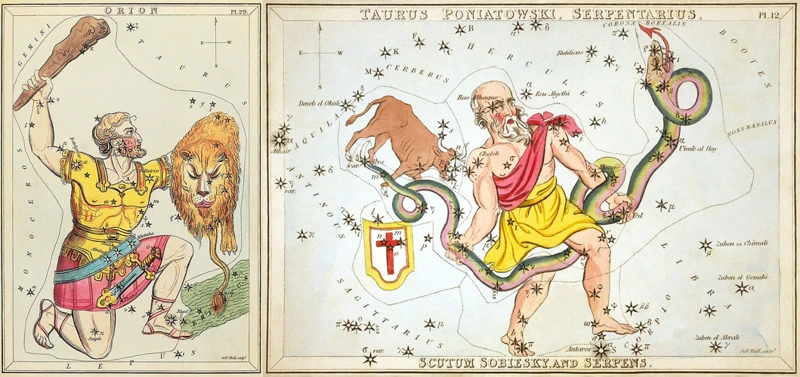
The connections between the Caduceus and Greek Mythology are deeply rooted and intertwined. Central to these connections is the figure of Hermes, the messenger of the Greek gods and the protector of travelers, merchants, and thieves. In Greek mythology, Hermes was often depicted carrying the Caduceus, using it to guide souls to the afterlife. The Caduceus symbolizes Hermes’ role as a mediator and communicator between the mortal and divine realms. Additionally, the Caduceus has ties to Asclepius, the god of healing and medicine. Asclepius, depicted with a staff entwined by a single serpent, later influenced the representation of the Caduceus in the medical field. This intertwining of mythology and symbolism highlights the profound significance of the Caduceus as a messenger of wisdom, transformation, and healing across various realms and disciplines. The Caduceus continues to be a powerful symbol that carries the timeless wisdom of ancient Greek mythology into the present day.
Messenger of the Gods
In Greek mythology, the Caduceus is closely associated with Hermes, the god of communication and commerce, known as the “Messenger of the Gods.” Hermes was revered for his ability to travel swiftly between the mortal and divine realms, delivering messages from the gods. The Caduceus, with its intertwining serpents and winged staff, became a symbol of Hermes’ power and authority as the divine intermediary. As the , Hermes possessed great knowledge and wisdom, acting as a bridge between different worlds and carrying important information between the deities and humankind. This role granted him the ability to communicate with ease, facilitating interaction and understanding between the gods and mortals. The Caduceus, as a representation of Hermes’ divine attributes, embodies the qualities of effective communication, diplomacy, and the exchange of knowledge. It serves as a reminder of the power of clear and harmonious communication in fostering connections and facilitating the flow of information both in the mortal realm and in the spiritual realm.
Asclepius and Healing
Asclepius, a prominent figure in Greek mythology, holds a significant role in the symbolism of the Caduceus and its connection to healing. Known as the god of medicine and healing, Asclepius was revered for his ability to cure diseases and bring about rejuvenation. He is often depicted holding a staff with a single serpent coiled around it, a precursor to the Caduceus symbol. The serpent, symbolizing renewal and transformation, represents the shedding of old skin and the cycle of rebirth. Asclepius’s association with healing is further emphasized by his daughters, Hygieia and Panacea, who personify cleanliness and universal remedies, respectively. This representation of healing and medicine through the figure of Asclepius has permeated through centuries, making the Caduceus a potent symbol in the field of medicine. The Caduceus’s intertwining serpents and healing associations remind us of the intricate balance between the physical and spiritual aspects of well-being. In embracing the wisdom of Asclepius and the symbolism of the Caduceus, we can tap into the profound healing energies that exist both within ourselves and in the world around us.
The Caduceus in Modern Medicine
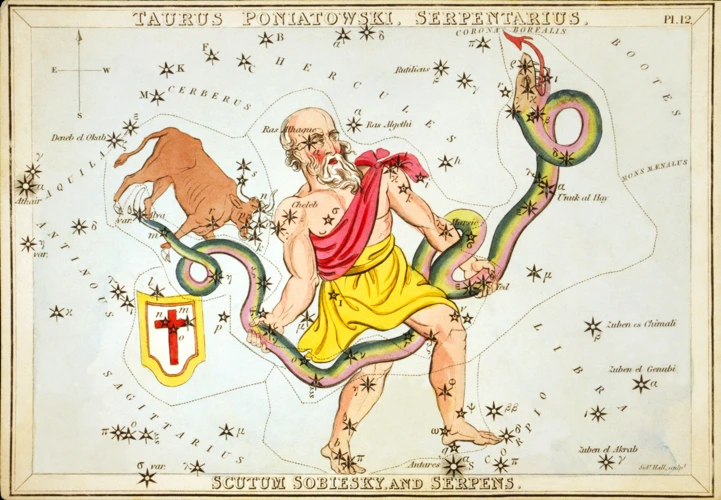
The Caduceus holds a unique place in modern medicine, although its usage and interpretation have been subject to historical confusion and controversy. The symbol, with its intertwined serpents and winged staff, is often associated with healing and healthcare. However, it is crucial to note that the Caduceus is not the universally accepted symbol of medicine. Instead, the correct medical symbol is the Rod of Asclepius, which features a single serpent wrapped around a staff. The historical mix-up can be attributed to a misinterpretation during the 19th century when the Caduceus was mistakenly adopted by some medical organizations. Nevertheless, the Caduceus in modern medicine has become a recognizable symbol, albeit with disputed accuracy. While some argue for its association with commerce and trade, others view it as a reminder of healing’s intertwined nature with communication and diplomacy. Understanding the complexities and controversies surrounding the Caduceus in modern medicine allows us to appreciate the symbolism and ongoing discussions within the field.
The Medical Caduceus
The Medical Caduceus has become a widely recognized symbol within the field of medicine, representing the healing arts and the medical profession. However, its adoption and usage in the medical field have sparked historical confusion and controversy. The Medical Caduceus features a staff entwined with two serpents, topped with wings, much like its ancient counterpart. This symbol is often associated with the Greek god Hermes and is mistakenly linked to the staff of Asclepius, the god of healing. The confusion arose in the early 20th century when the United States Army Medical Corps adopted the Caduceus as its emblem, believing it to be representative of medicine. This adoption was influenced by a misunderstanding of the symbol’s origins and its association with commerce and trade. Despite the historical inaccuracies, the Medical Caduceus has persisted as a symbol in modern medicine, often seen on medical insignia, uniforms, and medical facilities. It serves as a visual representation of the healing profession and the connection between medicine and the divine. Although the Medical Caduceus may not align with its original intended symbolism, its usage has become deeply ingrained in medical culture.
Historical Confusion and Controversy
The Caduceus symbol has not been immune to historical confusion and controversy. One of the main sources of confusion stems from its misinterpretation as a medical symbol. While the Caduceus is often mistakenly associated with medicine, the symbol traditionally associated with the medical profession is the Rod of Asclepius, which features a single serpent wrapped around a staff. This confusion can be traced back to the early 20th century when the Caduceus was adopted by the US Army Medical Corps as their emblem. This adoption was based on a misconception that the Caduceus was a universal symbol of medicine. Despite efforts to rectify this misconception and restore the use of the Rod of Asclepius in medical contexts, the Caduceus has remained prevalent in the field and continues to cause debate and controversy. The historical confusion surrounding the Caduceus symbol highlights the importance of accurate interpretation and understanding of symbols in their proper cultural and historical context.
Unlocking the Wisdom

Unlocking the wisdom embedded within the Caduceus symbol offers a gateway to self-discovery and personal transformation. This ancient emblem holds profound astrological applications that can guide individuals on their spiritual journey. Through the lens of Ophiuchus astrology, the Caduceus provides insights into our unique strengths, weaknesses, and hidden potentials. By understanding the symbolic meaning of the intertwined serpents, we can tap into our dual nature and harmonize the different aspects of our being. The wings atop the staff remind us to seek divine guidance and rise above earthly limitations. This wisdom can be applied in various areas of life, allowing us to make conscious choices, embrace healing and transformation, and find balance within ourselves and the world around us. The Caduceus serves as a powerful tool for navigating the complexities of existence and unlocking the potential for growth and enlightenment.
Astrological Applications
Astrological Applications:
Astrological applications of the Caduceus delve into the realm of Ophiuchus astrology, offering insights and guidance for those who seek a deeper understanding of their astrological chart. The symbolism of the Caduceus aligns with the qualities associated with Ophiuchus, such as healing, transformation, and spiritual wisdom. Astrologers may interpret the presence of the Caduceus in an individual’s birth chart as an indication of their potential to channel healing energy, achieve spiritual growth, or become skilled healers themselves. The intertwined serpents on the Caduceus may symbolize the integration of opposites within a person’s nature, highlighting the need for balance and harmony. Additionally, the wings atop the staff signify the merging of earthly and celestial energies, suggesting a connection to higher realms and divine guidance. For individuals exploring the Caduceus in their astrological charts, it is important to embrace the potential for healing and transformation, while also honoring the responsibility that comes with such gifts. By embracing the symbolism of the Caduceus, individuals can gain a deeper understanding of their astrological journey and navigate their path in alignment with their true purpose.
Personal Transformation
Personal transformation is a core theme that resonates with the symbolism of the Caduceus in Ophiuchus astrology. This emblem holds great potential for individuals seeking inner growth, spiritual development, and self-realization. The intertwining of the serpents represents the balance and integration of opposites within ourselves – the light and dark, the conscious and unconscious, the masculine and feminine energies. When we embark on a journey of personal transformation, we are delving into the depths of our being, embracing our shadows, and bringing harmony to our lives. The Caduceus serves as a reminder that personal transformation requires balance and spiritual transcendence, just as the wings atop the staff symbolize our ability to rise above earthly limitations and reach higher states of consciousness. It invites us to unleash the power within ourselves, facilitating healing, growth, and the realization of our true potential. Through introspection, self-reflection, and embracing the symbolic wisdom of the Caduceus, we embark on a transformative journey towards self-discovery, self-empowerment, and spiritual enlightenment. Embracing the Caduceus in Ophiuchus astrology opens the doorway to profound personal transformation and a deeper connection to the universe.
Conclusion
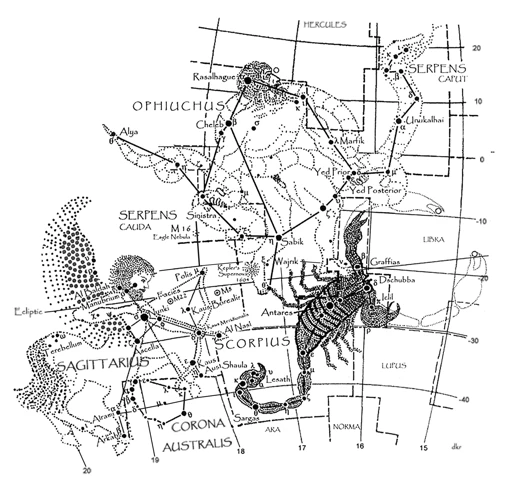
In conclusion, the Caduceus is a symbol of great depth and significance, holding a unique place in various domains, from astrology to mythology to modern medicine. Its intricate design and rich symbolism have captured the imagination of countless individuals throughout history. From its origins in Greek mythology as the symbol of Hermes, the messenger of the gods, to its association with healing and transformation in Ophiuchus astrology, the Caduceus continues to evoke intrigue and curiosity. Additionally, its presence in modern medicine, although historically controversial, has become synonymous with healthcare and the medical profession. Whether interpreted as a representation of duality, balance, or the harmonious integration of the physical and spiritual realms, the Caduceus offers wisdom and insight to those seeking deeper understanding. By exploring and unraveling the hidden meanings within this ancient symbol, we can unlock its profound teachings and apply them to our lives. The Caduceus acts as a reminder that symbols possess remarkable power and that they hold the potential to transcend time, connecting us to ancient wisdom and the mysterious forces of the universe. Let us embrace the enigmatic nature of the Caduceus and embark on a journey of personal growth and transformation.
Frequently Asked Questions
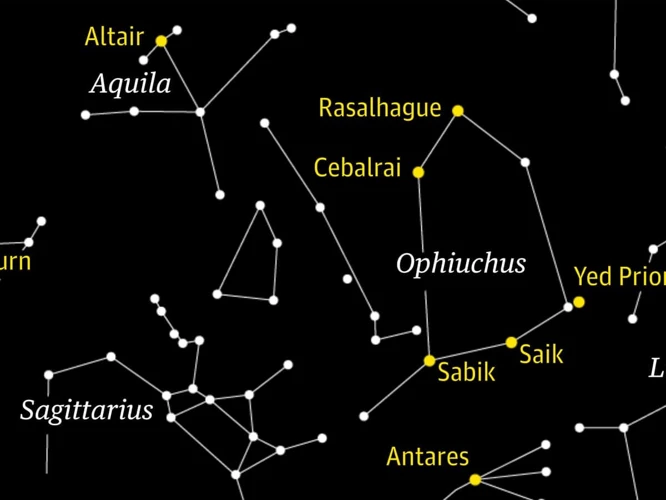
What is the significance of the Caduceus symbol?
The Caduceus symbol holds significant meaning in various realms such as astrology, healing, and mythology. It represents duality, balance, healing, and spiritual transformation.
What is the origin of the Caduceus symbol?
The Caduceus symbol originated in Greek mythology and is associated with Hermes, the messenger of the gods.
How does the Caduceus relate to astrology?
In Ophiuchus astrology, the Caduceus gains added significance as it aligns with the constellation of Ophiuchus, symbolizing healing and transformation.
What do the serpents in the Caduceus symbol represent?
The two intertwined serpents in the Caduceus symbol represent the dual aspects of life, representing both the physical and spiritual realms.
What is the meaning behind the wings in the Caduceus symbol?
The wings atop the Caduceus symbolize divine guidance and ascent, suggesting a connection between earthly and celestial realms.
What role does the Caduceus play in Greek mythology?
The Caduceus is often associated with Hermes, the messenger of the gods. It was believed to hold the power to guide and protect individuals on their journeys.
How is the Caduceus symbol connected to healing?
In Greek mythology, the Caduceus is connected to Asclepius, the god of healing. The symbol is often associated with medicine and the healing arts.
What is the difference between the Caduceus symbol and the medical symbol?
While the Caduceus symbol is commonly associated with medicine, the correct medical symbol is the Rod of Asclepius, which features a single serpent wrapped around a staff.
What is the controversy surrounding the use of the Caduceus in modern medicine?
The use of the Caduceus as a symbol in modern medicine has caused confusion and controversy, as some argue that it is more accurately associated with commerce and trade.
How can astrology enthusiasts apply the wisdom of the Caduceus symbol?
Astrology enthusiasts can draw upon the Caduceus symbol’s wisdom by exploring its connection to Ophiuchus astrology and delving deeper into its symbolic representation to gain insights into personal transformation and spiritual growth.
References
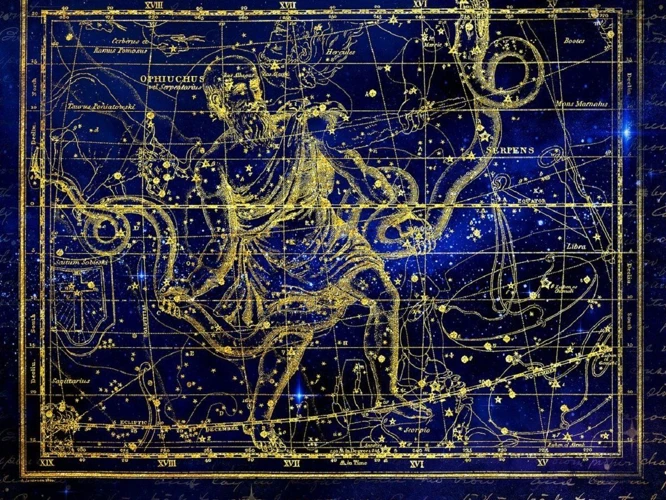
Frequently Asked Questions

Frequently Asked Questions

What is the significance of the Caduceus symbol?
The Caduceus symbol holds significant meaning in various cultures and fields, representing healing, transformation, and the balance between opposing forces.
What is the origin and history of the Caduceus symbol?
The Caduceus symbol has its roots in ancient Greece, where it was associated with Hermes, the messenger of the gods, and later adopted by the medical profession in the United States in the 19th century.
What does the Caduceus symbol represent in Ophiuchus astrology?
In Ophiuchus astrology, the Caduceus symbol represents the energy of healing, transformation, and the integration of opposites. It is associated with the Ophiuchus zodiac sign.
How does the Caduceus symbol relate to astrology?
Astrologically, the Caduceus symbol is linked to the Ophiuchus zodiac sign, which is thought to possess healing abilities and a deep understanding of the human psyche.
What is the Serpent symbol in relation to the Caduceus?
The Serpent symbol in the Caduceus represents wisdom, transformation, and the Kundalini energy, which is said to rise along the spine, awakening inner potential and spiritual growth.
What does the Winged Staff symbolize in the Caduceus?
The Winged Staff in the Caduceus symbolizes balance, harmony, and the union of opposites. It represents the integration of mind and body, spirit and matter, and the pursuit of healing and wholeness.
Who is the Messenger of the Gods in Greek mythology?
The Messenger of the Gods in Greek mythology is Hermes, also known as Mercury in Roman mythology. He is associated with communication, travel, commerce, and the guiding of departed souls to the underworld.
What is the connection between the Caduceus and Asclepius?
Asclepius, the Greek god of healing, is often depicted with a rod wrapped with a single serpent, which later evolved into the Caduceus symbol associated with the medical profession.
What is the Medical Caduceus?
The Medical Caduceus is a variant of the Caduceus symbol commonly used by medical organizations and professionals. It features two serpents entwined around a staff with wings at the top.
Why is there historical confusion and controversy surrounding the Caduceus symbol?
Historical confusion and controversy surrounding the Caduceus symbol stem from its mistaken association with the rod of Asclepius, another medical symbol with a single serpent, leading to debates about its proper usage in the medical field.
References



